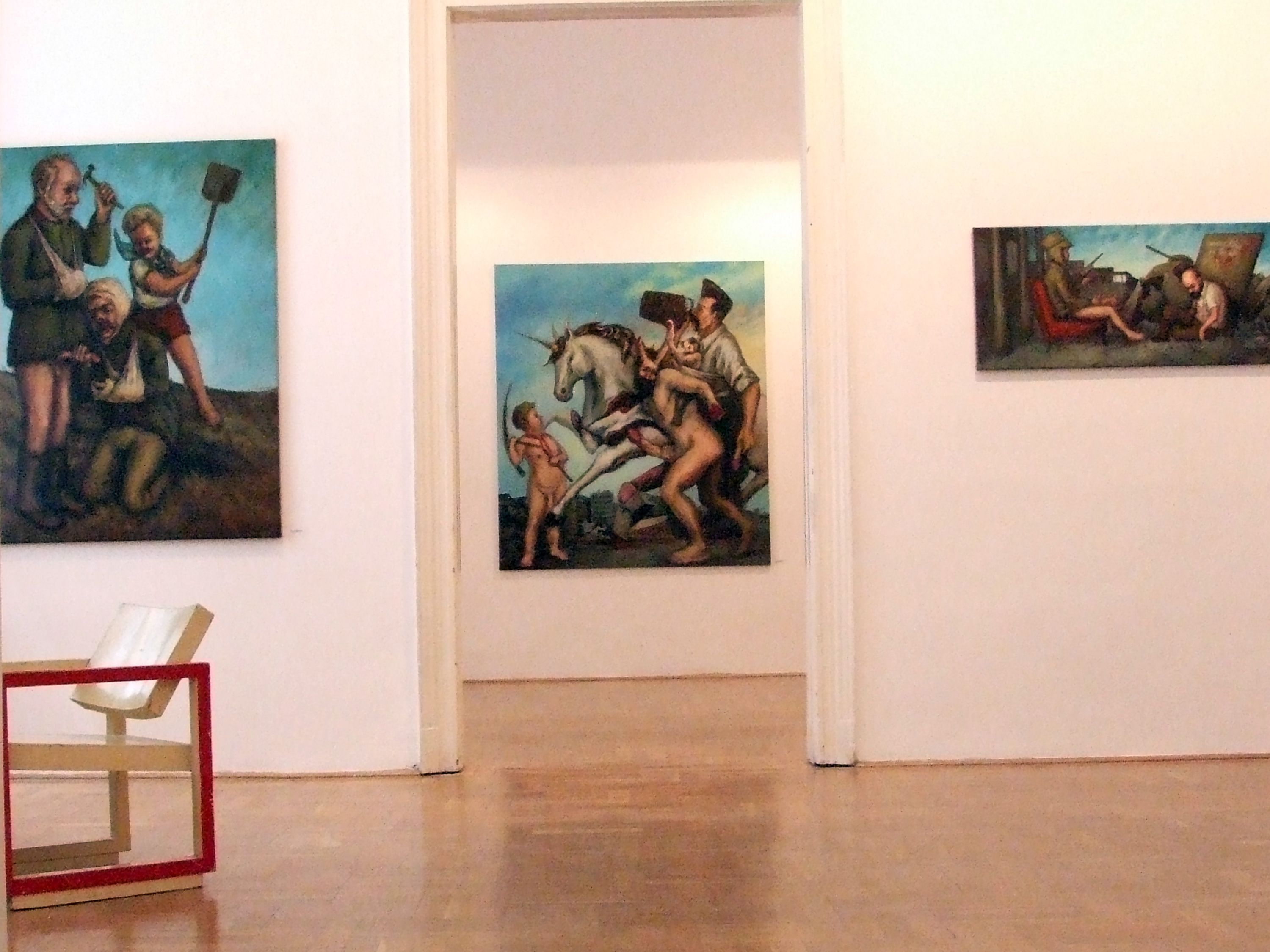Csaba Kis Róka
Parturiunt Montes
| Venue: | acb Gallery |
| Date: | May 20 – Jun 17, 2011 |
Description
Csaba Kis Róka is one of the most uniquely voiced and consistent artists of the young painter generation. Since his debut at the Liverpool Biennial in 2010, his work has received continuous international attention.
Kis Róka's painterly agenda combines the classic compositional and iconographic traditions and Italian Baroque painterliness with a distinctively expressive visual world that transforms the most brutal arsenal of pornographic and horror imagery into satire. The characters of his dynamic compositions – modeled after Baroque crowd scenes – are aging men, cherubic children, and animals, as well as hybrid beings created from these, depicted in the process of inflicting and enduring acts of sexual or physical aggression. The scenes which are acted out by maimed and wounded men wearing traditional attire, petrified in twisted poses, and exposing their swelling – or depravity of – manhood, knock the bottom out of our culturally embedded taboos concerning male roles and sexuality.
The brutality of Kis Róka’s paintings, however, does not only originate from its themes of cruelty and perversion: it is enhanced by an expressive painterly depiction, which presents viewers with the most direct and sensuous representation of blood and flesh, of the taut muscles and contorted grimaces of characters engaged in the acts. The artist’s conjuring of the virtuosic formal and compositional solutions of Italian Baroque painting, as well as the classical traditions of representation (Saint Sebastian, Laocoon, Christian martyr iconography), in addition to topping off the sensuous nature of the experience, also puts quotation marks around the images by bringing into conflict the fundamentally contrary cultural decoding of the theme and its presentation. In addition to the diversity of content and form, the characters’ attire and the background elements also serve to create an effect of alienation: they carry cultural-political references, which – aside from sometimes bearing current political relevance – liberate viewers through intellectualization and humour from the oppressive experience of shocked revulsion.
In his exhibition entitled Parturiunt Montes, Csaba Kis Róka presents paintings that are in a direct line of continuation with his art, which is remarkably rich in spite of his young age. In comparison to his earlier works, a universalization of cultural references and a further nuancing of his already rich technical repertoire are evident in the exhibited material.
The title of the exhibition, which refers to an adage from Horatius’ Ars Poetica (“Parturiunt montes, nascitur ridiculus mus”, in English: “The mountains are in labor; a ridiculous mouse will be born”), can be brought into connection with the exhibition, as well Kis Róka’s art and works, in a number of ways, but it can also be interpreted in a wider context. Which references are most prominent is for the viewers to decide.
